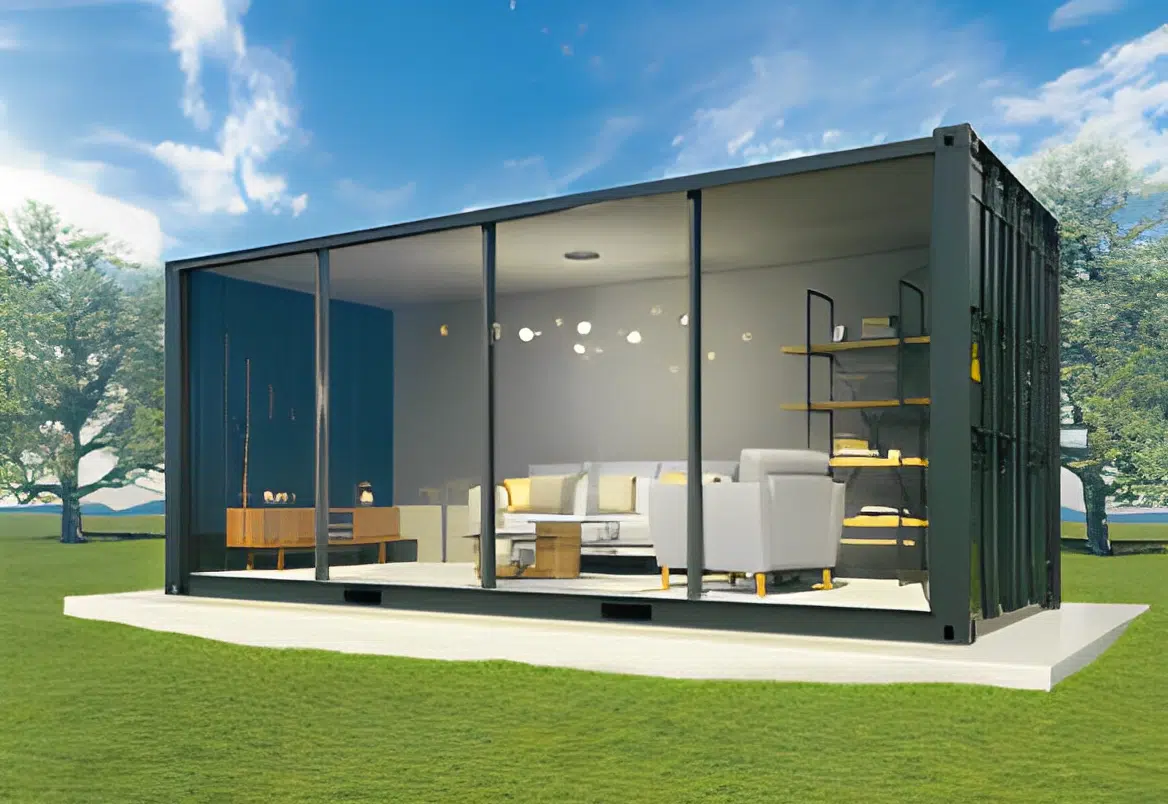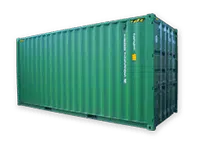While originally designed for the safe transport of goods and products on international shipping lines, shipping containers have evolved to become an innovative building tool. For those looking for a cost-effective, eco-friendly home, then a shipping container home is a worthwhile alternative to traditional building. But before you dive in, here’s a look at the pros and cons of building a container home.
What are the advantages of building with shipping containers?
Let’s start with the pros! When it comes to shipping container housing, there are significant advantages over traditional homes that might sway you.
-
Cost-effective construction
The shipping container itself is a relatively inexpensive purchase when compared with traditional building materials, and the modular nature of container construction means you can also save money on labour and material costs.
2. Sustainability
The simple act of repurposing a shipping container into a home contributes directly to sustainable construction practices. You’re eliminating the need for new building materials, and by incorporating some innovative design and power-generation techniques, you’re left with a more energy-efficient home.
3. Durability
Any home is designed for long-term use and shipping container homes are no different. They are built to withstand extreme weather conditions, prevent the intrusion of pests, and protect internal goods for a long time. This makes shipping containers a truly durable option.
4. Versatility
With a shipping container home, you can get really creative, stacking and arranging the containers in various configurations to accommodate your lifestyle needs. You can enhance the aesthetic and functionality by combining them with other construction materials where needed.
5. Speed
Shipping containers are prefabricated structures that can be easily transported – as is their nature by design – and reassembled in a different place. This makes building a home with a shipping container a much quicker option than any form of traditional building.
What are the challenges of building with a shipping container?
Obviously, if it was all pros, then everyone would be building with shipping containers! There are a few challenges that you will need to consider and overcome before you start designing.
-
Ventilation and insulation
Remember that shipping containers are designed to transport cargo primarily, not house humans, which means that there is no ventilation or insulation. You will have to install windows and doors while considering a free flow of air, while also considering insulation techniques for heating and cooling and to prevent condensation.
2. Building codes and permits
You will need to check with local authorities regarding the building codes as you might need to seek permits, even for a shipping container home. Elements such as structural integrity, electrical and plumbing installations, and fire safety will have to align with local laws.
3. Modifications
It’s unlikely that you’re going to want to live in a solid rectangular construct if you could adapt it to make more comfortable living spaces! This takes a bit more time and effort, and these structural modifications can also weaken the structural integrity requiring more enforcement.
4. Space limitations
The fixed dimensions of a shipping container mean that your living space could be limited which is challenging for accommodating yourself and your belongings. You can look at combining containers to overcome this challenge, however.
How to design a shipping container home
With these pros and cons in mind, it’s time to design your ultimate shipping container home that maximises the many advantages while navigating the challenges.
-
Consider how many containers you need
If you’re looking at designing a single-container home, then the design will be relatively simple, but if you need more than one container, it’s important to analyse how many ahead of time. Once you’ve secured the containers, they can be easily moved into position.
-
Consider the space you’re using
You need to learn to be really economical with the interior space of a container home so that you can comfortably fit all your furniture while allowing free flow of movement. You don’t want to be constantly bumping into things, so considering designs that can be multi-purpose, and furniture that can be stored away when not needed can go a long way in getting that perfect living space.
-
Consider the building site
Assess your chosen building site and consider various factors such as drainage, views, shade, and other important land features that could make this a challenging build. You will also have to take into account aspects such as energy – if you’re using solar power, for example, you’ll need sunny space for the panels – waste treatment, and water storage.
Port Shipping Containers is one of Australia’s leading manufacturers and suppliers of shipping containers, delivering them throughout Australia. The company supplies new, used, modified, and customised shipping containers for sale in a variety of sizes and types, with fast and efficient service direct to wherever you are!








